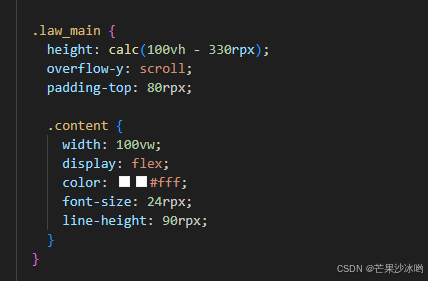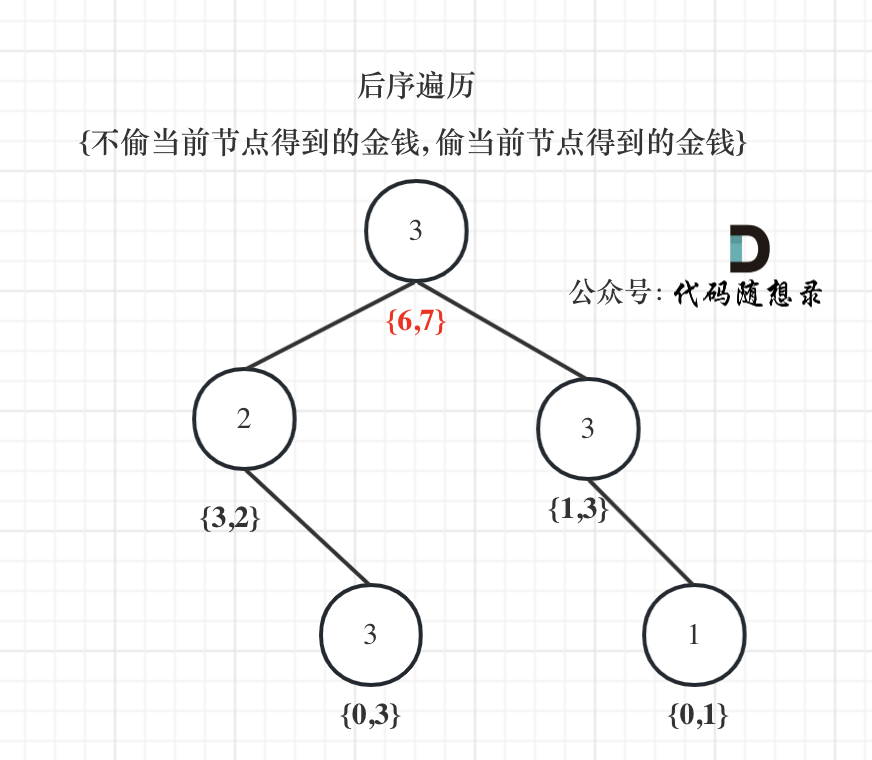

🌈个人首页: 神马都会亿点点的毛毛张

🎃分类不好,这道题就做不出来!🎈
📌LeetCode链接:54. 螺旋矩阵
文章目录
- 题目1:螺旋矩阵II🍑
- 1.题目描述🍒
- 2.题解🍅
- 2.1 直接法-分类讨论🥑
- 2.2 方法二-解决中心值忘记赋值问题🥥
- 2.3 方法3-通解🍊
- 题目2:螺旋矩阵🍈
- 1.题目描述🍊
- 2.题解🍍
- 2.1 方法1-通解🍌
- 2.2 方法2🍇
题目1:螺旋矩阵II🍑
1.题目描述🍒
给你一个正整数 n ,生成一个包含 1 到 n2 所有元素,且元素按顺时针顺序螺旋排列的 n x n 正方形矩阵 matrix 。
示例 1:

输入:n = 3
输出:[[1,2,3],[8,9,4],[7,6,5]]
示例 2:
输入:n = 1
输出:[[1]]
提示:
1 <= n <= 20
2.题解🍅
2.1 直接法-分类讨论🥑
class Solution {public int[][] generateMatrix(int n) {// 创建一个 n x n 的矩阵,用于存放螺旋顺序的数字int[][] result = new int[n][n];// 计算需要填充螺旋圈的数量(当 n 为偶数时,正好填满;当 n 为奇数时,中间会剩余一个元素)int k = n / 2;// 初始化数字计数器,从 1 开始int count = 1;// 定义四个边界:上、下、左、右int top = 0, bottom = n - 1;int left = 0, right = n - 1;// 循环处理每一层的螺旋圈for (int i = 0; i < k; i++) {// 从左到右填充当前顶部的一行for (int j = left; j < right; j++) result[top][j] = count++;// 从上到下填充当前右边的一列for (int j = top; j < bottom; j++) result[j][right] = count++;// 从右到左填充当前底部的一行for (int j = right; j > left; j--) result[bottom][j] = count++;// 从下到上填充当前左边的一列for (int j = bottom; j > top; j--) result[j][left] = count++;// 缩小边界,进入下一层螺旋圈left++;right--;top++;bottom--;}// 如果 n 是奇数,填充矩阵中心的最后一个元素if (n % 2 != 0) {result[left][top] = count;}// 返回填充好的螺旋矩阵return result;}
}
2.2 方法二-解决中心值忘记赋值问题🥥
class Solution {public int[][] generateMatrix(int n) {// 创建一个 n x n 的矩阵,用于存放螺旋顺序的数字int[][] result = new int[n][n];// 初始化数字计数器,从 1 开始int count = 1;// 目标值,表示填充到矩阵中的最大数字int target = n * n;// 定义四个边界:上、下、左、右int top = 0, bottom = n - 1;int left = 0, right = n - 1;// 开始填充矩阵,直到填满目标值while (count <= target) {// 从左到右填充当前顶部的一行for (int i = left; i <= right; i++) result[top][i] = count++;// 填充完一行后,移动上边界下移一行top++;// 从上到下填充当前右边的一列for (int i = top; i <= bottom; i++) result[i][right] = count++;// 填充完一列后,移动右边界左移一列right--;// 从右到左填充当前底部的一行for (int i = right; i >= left; i--) result[bottom][i] = count++;// 填充完一行后,移动下边界上移一行bottom--;// 从下到上填充当前左边的一列for (int i = bottom; i >= top; i--) result[i][left] = count++;// 填充完一列后,移动左边界右移一列left++;}// 返回填充好的螺旋矩阵return result;}
}
2.3 方法3-通解🍊
class Solution {public int[][] generateMatrix(int n) {// 创建一个 n x n 的矩阵用于存储结果int[][] result = new int[n][n];// 初始化从 1 开始的计数器int count = 1;// 目标计数为 n*n,表示矩阵中应有的最大值int target = n * n;// 定义四个边界:上(top)、下(bottom)、左(left)、右(right)int top = 0, bottom = n - 1;int left = 0, right = n - 1;// 循环继续,直到所有的边界都相交while (left <= right && top <= bottom) {// 从左到右填充矩阵的上边界for (int i = left; i <= right; i++) result[top][i] = count++;// 从上到下填充矩阵的右边界for (int i = top + 1; i <= bottom; i++) result[i][right] = count++;// 确保矩阵中至少有两行两列,然后填充底边和左边if (left < right && top < bottom) {// 从右到左填充矩阵的下边界for (int i = right - 1; i > left; i--) result[bottom][i] = count++;// 从下到上填充矩阵的左边界for (int i = bottom; i > top; i--) result[i][left] = count++;}// 调整边界,以缩小矩阵范围bottom--;right--;top++;left++;}// 返回生成的螺旋矩阵return result;}
}
题目2:螺旋矩阵🍈
1.题目描述🍊
给你一个 m 行 n 列的矩阵 matrix ,请按照 顺时针螺旋顺序 ,返回矩阵中的所有元素。
示例 1:

输入:matrix = [[1,2,3],[4,5,6],[7,8,9]]
输出:[1,2,3,6,9,8,7,4,5]
示例 2:

输入:matrix = [[1,2,3,4],[5,6,7,8],[9,10,11,12]]
输出:[1,2,3,4,8,12,11,10,9,5,6,7]
提示:
m == matrix.lengthn == matrix[i].length1 <= m, n <= 10-100 <= matrix[i][j] <= 100
2.题解🍍
2.1 方法1-通解🍌
class Solution {public List<Integer> spiralOrder(int[][] matrix) {// 创建一个列表用于存储结果List<Integer> result = new ArrayList<>();// 获取矩阵的行数和列数int m = matrix.length;int n = matrix[0].length;// 定义四个边界:左(left)、右(right)、上(top)、下(bottom)int left = 0, right = n - 1;int top = 0, bottom = m - 1;// 循环执行,直到所有边界重合while (left <= right && top <= bottom) {// 从左到右填充矩阵的上边界for (int i = left; i <= right; i++) result.add(matrix[top][i]);// 从上到下填充矩阵的右边界for (int i = top + 1; i <= bottom; i++) result.add(matrix[i][right]);// 确保矩阵中至少有两行两列,然后填充底边和左边if (left < right && top < bottom) {// 从右到左填充矩阵的下边界for (int i = right - 1; i > left; i--) result.add(matrix[bottom][i]);// 从下到上填充矩阵的左边界for (int i = bottom; i > top; i--) result.add(matrix[i][left]);}// 调整边界,以缩小矩阵范围bottom--; // 下边界上移right--; // 右边界左移top++; // 上边界下移left++; // 左边界右移}// 返回最终的结果列表return result;}
}
2.2 方法2🍇
class Solution {public List<Integer> spiralOrder(int[][] matrix) {// 创建一个列表用于存储结果List<Integer> result = new ArrayList<>();// 获取矩阵的行数和列数int m = matrix.length;int n = matrix[0].length;// 定义四个边界:左(left)、右(right)、上(top)、下(bottom)int left = 0, right = n - 1;int top = 0, bottom = m - 1;// 循环执行while (left <= right && top <= bottom) {// 从左到右遍历矩阵的上边界,并将元素加入结果列表for (int i = left; i <= right; i++) result.add(matrix[top][i]);// 将上边界下移,如果上边界超过下边界,跳出循环if (++top > bottom) break;// 从上到下遍历矩阵的右边界,并将元素加入结果列表for (int i = top; i <= bottom; i++) result.add(matrix[i][right]);// 将右边界左移,如果左边界超过右边界,跳出循环if (left > --right) break;// 从右到左遍历矩阵的下边界,并将元素加入结果列表for (int i = right; i >= left; i--) result.add(matrix[bottom][i]);// 将下边界上移,如果上边界超过下边界,跳出循环if (top > --bottom) break;// 从下到上遍历矩阵的左边界,并将元素加入结果列表for (int i = bottom; i >= top; i--) result.add(matrix[i][left]); // 将左边界右移,如果左边界超过右边界,跳出循环if (++left > right) break;}// 返回最终的结果列表return result;}
}
ottom) break;
// 从下到上遍历矩阵的左边界,并将元素加入结果列表for (int i = bottom; i >= top; i--) result.add(matrix[i][left]); // 将左边界右移,如果左边界超过右边界,跳出循环if (++left > right) break;}// 返回最终的结果列表return result;
}
}



















